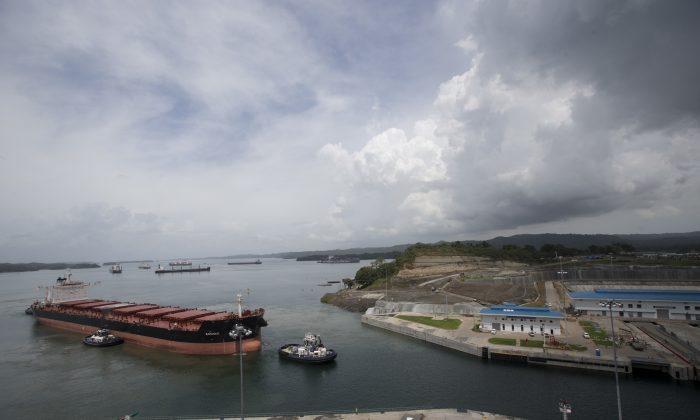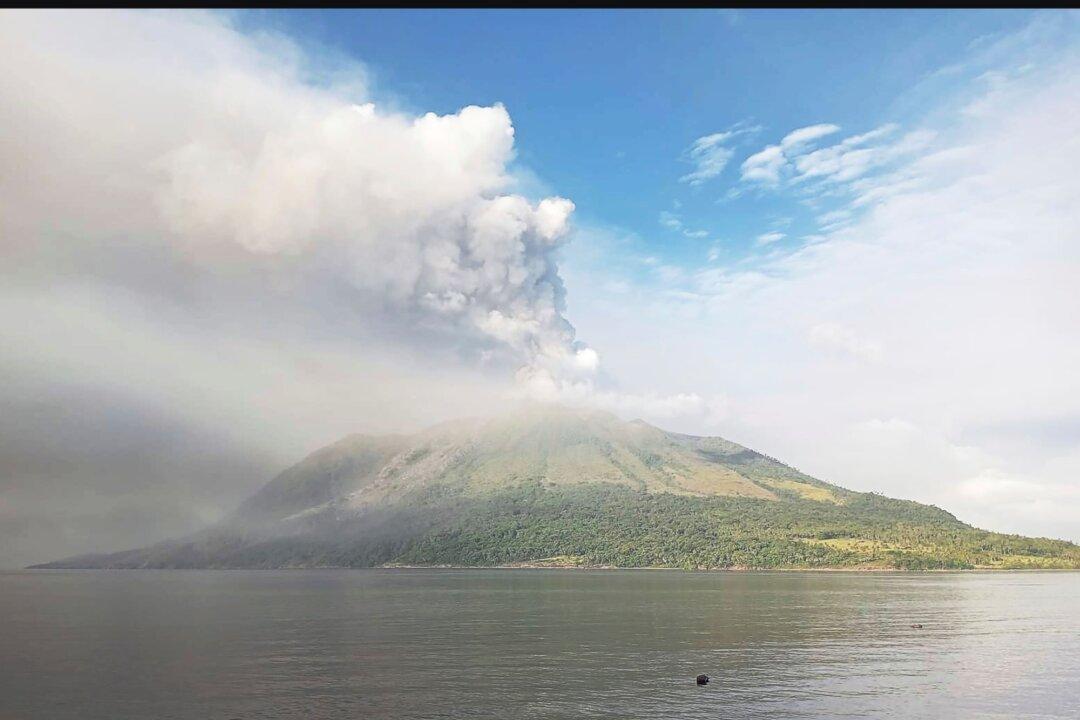PANAMA CITY—Authorities are hosting a big bash Sunday to inaugurate newly expanded locks that will double the Panama Canal’s capacity in a multibillion-dollar bet on a bright economic future despite tough times for international shipping.
Nearly two years late due to construction delays and labor strife, the $5.25 billion project formally launches with the transit of a 158-foot-wide (48.2 meters), 984-foot-long (300 meters), Chinese-owned container ship, one of the modern class of mega-vessels that will now be able to use the canal.
With 30,000 people and eight foreign heads of state expected to attend the festivities, officials are bullish.
“There is evidence that the Panama Canal, with this expansion, is an important player not only for regional maritime commerce but worldwide,” said Oscar Bazan, the Panama Canal Authority’s executive vice president for planning and commercial development. “The canal is a winning bet. (Clients) will benefit from saving not only time but also money, because the canal is a route that shortens distance.”

However, the party comes amid a lull in global shipping due to the drop in oil prices, an economic slowdown in China, which is the canal’s second-largest customer, and other factors that have hit the waterway’s traffic and income.
While authorities anticipate increasing commerce between Asia and ports on the U.S. East Coast, doubts remain that not all those ports are ready to handle the huge New Panamex-class cargo ships. Net cargo volume through the canal from the U.S. East Coast toward Asia fell 10.2 percent in 2015, according to official statistics. Meanwhile the Suez Canal in Egypt recently lowered tariffs by up to 65 percent on large container carriers in an attempt to keep its traffic.
“It’s important to remember that the canal does not create demand. The canal opens the route. Supply and demand on a world level is what will decide whether the Panama Canal will really bring more volume or not,” said Antonio Dominguez, a general manager for global shipping leader Maersk Line, which moves about 14.2 percent of world commerce. “What is certain is that the current canal has maxed out.”
Maersk was among shipping companies that have reduced passages through the Panama Canal, although Dominguez said the company is considering a return.
Since the canal was handed over from U.S. control at the end of 1999, the waterway has generated about $10 billion in direct income for the Central American nation and is responsible for about 40 percent of its GDP, factoring in related economic activity. Some 35 to 40 vessels transit the waterway each day, and the canal is estimated to handle about 6 percent of world maritime commerce.
Panama began the expansion nearly a decade ago. Originally planned to open in late 2014 around the waterway’s centennial, the new locks can accommodate ships that carry up to three times the cargo of those previously able to use the canal.

Grupo Unidos por el Canal, the Italian- and Spanish-led consortium that spearheaded construction, handed the project over Friday, although a series of claims are still pending for presumed cost overruns of more than $3 billion.
Paul Bingham, a shipping economist at Boston-based EDR Group, predicted the canal expansion’s global impact will be small.
“The proportion of world trade that could plausibly use the Panama Canal is constrained by the geography of the world’s population, resource endowments and production regions,” Bingham said. “There is very little a larger canal can influence at the margin to induce shifts in the geography of world trade, even through potential reductions in costs of shipping a variety of commodities to, from and within the Americas.”

A Look at the Panama Canal and Its Newly Expanded Locks
A look at the Panama Canal and its newly expanded locks, which were formally inaugurated Sunday:
The Canal
Opened on Aug. 15, 1914, the Panama Canal was constructed by the United States between 1904 and 1913 at a cost of $375 million, building on an earlier, French-led effort that fizzled. An estimated 20,000 workers died during French control of the project, many due to tropical diseases such as malaria, and 5,600 more perished during U.S. construction. The canal revolutionized global sea traffic by replacing long voyages around Cape Horn at the tip of South America.
The Operations
The canal was under U.S. control until a 1977 agreement between Presidents Jimmy Carter and Omar Torrijos paved the way for its transfer to Panama on Dec. 31, 1999. Canal authorities say it generated $10 billion in direct income for the Panamanian state through 2015. With related economic activity, the canal is responsible for about 40 percent of Panama’s GDP. On average, 35 to 40 ships transit the waterway each day, and the canal is estimated to handle 6 percent of world maritime commerce.

The New Locks
The $5.25 billion project was initially scheduled for completion in October 2014, roughly coinciding with the canal’s 100th anniversary, but was delayed by slow approvals for concrete to use in the locks, labor strikes and leaks detected late last year. The expansion includes two new sets of lock complexes, one on the Pacific coast on the outskirts of Panama City and one on the northern coast at Colon.
The New Ships
The new locks are 180 feet wide and 1,400 feet long, big enough to accommodate New Panamax-class vessels that are seen as the future of global shipping. Those ships can reach 1,200 feet long—more than three football fields—and are up to 160 feet wide. They can carry 13,000 to 14,000 cargo containers, about 2 1/2 to 3 times as many as on vessels that could fit in the previous locks. The International Monetary Fund estimates the canal expansion will reduce global maritime shipping costs by $8 billion a year.

The First Ship
Originally called the Andronikos, the ship making the inaugural voyage through the new locks was renamed the COSCO Shipping Panama by its Chinese owner in honor of Panama and the ceremonial passage. It’s a Marshall Islands-flagged container vessel with a capacity of 9,472 shipping containers and is 158 feet wide and 984 feet long. It entered the Atlantic locks Sunday morning for an approximately eight-hour transit to the Pacific locks.






Friends Read Free